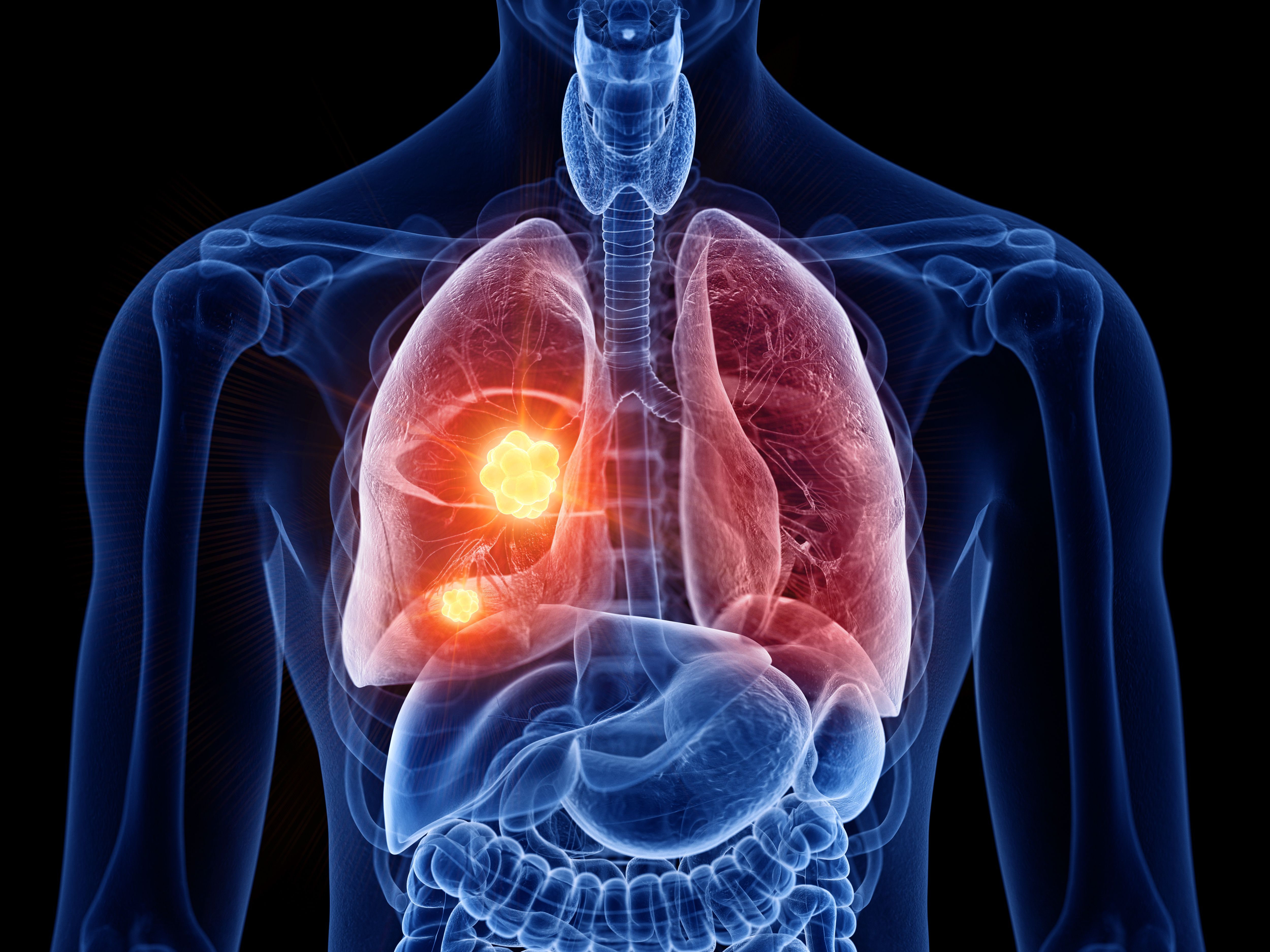Article
Lung Cancer Symptoms and Treatment Options
Author(s):
Approximately every 2.2 minutes, a new diagnosis of lung cancer is registered.
Lung cancer is the leading cause of cancer deaths worldwide. Any patients with a family history of lung cancer may have a higher risk of the disease if exposed to smoke. Smoking damages the lungs over time, and when the body cannot recover any longer from the damage, lung cancer can find its way in.¹
Credit: SciePro - stock.adobe.com

Approximately 1 in 16 people in the United States will be diagnosed with lung cancer during their lives. Approximately every 2.2 minutes, a new diagnosis of lung cancer is registered. About 60% of all the newly diagnosed patients have never smoked or been former smokers.²
Signs and symptoms of lung cancer may vary among patients, including a cough that the person has not experienced before and does not go away. Some of these patients may cough up blood at times, which is an urgent alert. Some may start experiencing shortness of breath, chest pain, losing weight even without trying, headache, bone pain, and sometimes hoarseness.¹
There are 2 major types of lung cancer: small cell lung cancer (SCLC) and non-small cell lung cancer (NSCLC). SCLC develops in those who smoke heavily and occurs less commonly than NSCLC, which includes several types of lung cancers, including squamous cell carcinoma, adenocarcinoma and large cell carcinoma.¹
Risk factors that can increase the chances of getting lung cancer include smoking history, secondhand smoke exposure, radiation therapy, exposure to asbestos, carcinogens, and most importantly, family history of lung cancer. So, it is important for patients with such risk factors to pay attention to their history and seek consultation to be ahead of the disease.¹
Due to the risk factors mentioned above, these individuals can prepare and use prophylactic methods to help with their chances of lung cancer diagnosis. These may include eating healthy, eating more vegetables, staying away from smoke. Exercise most days of the week may also help with reducing the chances of lung cancer.¹
Diagnosis of lung cancer may include imaging tests, such as a CT scan that can reveal small lesions in the lungs. Sputum cytology can also show the presence of lung cancer cells. Lastly, tissue samples from lung biopsy can help identify abnormal cells that can be cancerous.¹
Treatment options for lung cancer may include surgery, radiation therapy, and chemotherapy. Medications play a major role when it comes to lung cancer treatment. These medications include paclitaxel, everolimus, alectinib, bevacizumab, ceritinib, docetaxel, durvalumab, everolimus, gefitinib, pembrolizumab, adagrasib, lorlatinib, nivolumab, and sotorasib. Some of these medications also come in combination, such as carboplatin-taxol, as well as gemcitabine-cisplatin. Medications approved for SCLC include everolimus, doxorubicin, etoposide, durvalumab, nivolumab, lurbinectedin and atezolizumab.³
The most commonly used chemotherapies include docetaxel, gemcitabine, and paclitaxel. Atezolizumab, durvalumab, nivolumab, and pembrolizumab, belong the class of PD-1 inhibitors. Ipilimumab and tremelimumab belong to the class of drugs called CTLA-4 inhibitors.
Afatinib, dacomitinib, erlotinib, gefitinib, and osimertinib belong to epidermal growth factor receptor (EGFR) inhibitors. Alectinib, brigatinib, ceritinib, crizotinib, and lorlatinib belong to a class of drugs called anaplastic lymphoma kinase (ALK) inhibitors.⁴
There are other non-pharmacologic therapies that may help patients with lung cancer manage the adverse effects of treatment, including mental health impacts. These include acupuncture, dietary supplements, hypnosis, massage therapy, medication, specialized diets, and herbal preparations.⁴
The 5-year relative survival rate for NSCLC in women in the United States is approximately 33% and for men is about 23%. For those in whom the cancer has not spread outside of the lungs, the survival rate is 65% over 5 years. With such statistics, patients showing any symptoms should refer to their providers immediately to address any relevant new symptoms, and if diagnosed, to start various therapy options as soon as possible.⁵
References
- Lung cancer (2022) Mayo Clinic. Available at: https://www.mayoclinic.org/diseases-conditions/lung-cancer/symptoms-causes/syc-20374620 Accessed June 23, 2023.
- Lung cancer statistics (no date) Lung Cancer Statistics | LUNGevity Foundation. Available at: https://www.lungevity.org/for-supporters-advocates/lung-cancer-awareness/lung-cancer-statistics#:~:text=One%20in%2016%20people%20in,lung%20cancer%20in%20their%20lifetime.&text=More%20than%20238%2C000%20people%20in,new%20diagnosis%20every%202.2%20minutes. Accessed June 23, 2023.
- Drugs approved for lung cancer (no date) National Cancer Institute. Available at: https://www.cancer.gov/about-cancer/treatment/drugs/lung (Accessed June 23, 2023.
- Lung cancer medications: Treatment types & combinations (2023) Lung Cancer Center. Available at: https://www.lungcancercenter.com/treatment/medications. Accessed June 23, 2023.
- Lung cancer - non-small cell - statistics (2023) Cancer.Net. Available at: https://www.cancer.net/cancer-types/lung-cancer-non-small-cell/statistics#:~:text=The%205%2Dyear%20relative%20survival%20rate%20for%20NSCLC%20in%20women,relative%20survival%20rate%20is%2065%25. Accessed June 23, 2023.
Newsletter
Stay informed on drug updates, treatment guidelines, and pharmacy practice trends—subscribe to Pharmacy Times for weekly clinical insights.






